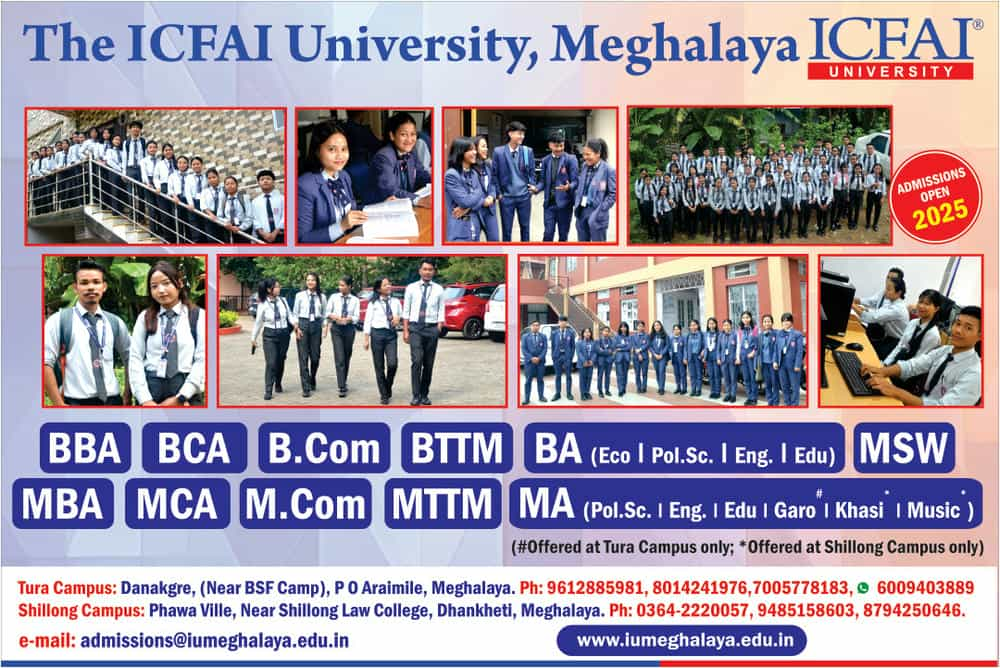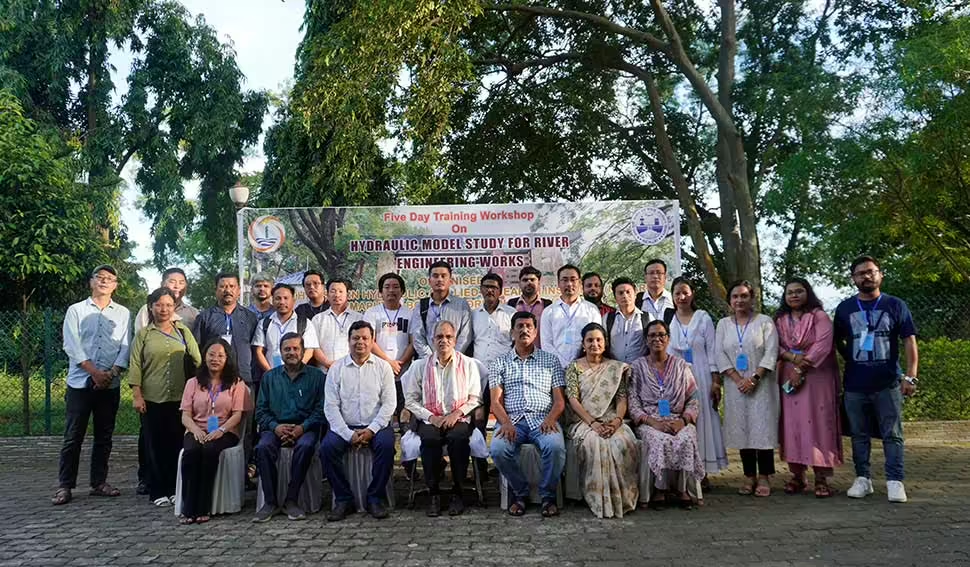Comprehensive hydraulic modelling study and training workshop concludes in Guwahati

Physical and Mathematical modelling are essential tools in river engineering. These help engineers to better understand the behaviour of rivers and predict the impact of proposed changes or interventions on river systems. Physical modelling involves creating a scaled-down physical model of a river system in a laboratory setting.
Under Dr Ranbir Singh’s visionary leadership, the NEHARI Brahmaputra Board is carrying out significant model studies in partnership with CWPRS Pune and IIT Guwahati.
The studies focused on the proposed railway bridge projects near Guwahati and Tezpur, under an MoU with Northeast Frontier Railway. These studies aimed to simulate natural water flow, analyse the flow around structures, assess scour near piers and determine appropriate spacing for the new bridge relative to the existing one. Recognizing the importance of such work, NEHARI organized a five-day training workshop titled “Hydraulic Model Study for River Engineering Works” in association with the Central Water Power Research Station (CWPRS), Pune, from July 23 to 27.
The workshop was inaugurated on July 23, by Prasad S Kunjeer, Scientist “D” at CWPRS Pune, and Ranjit Deka, Director of NEHARI.

This training was an attempt to provide an overview of the framework of the use of physical and mathematical modelling techniques along with GIS and remote sensing technologies in flood risk management and focus on the state-of-the-art concepts and practices of flood management covering important topics viz. Processing and analysis of hydro-meteorological data, Introduction to Numerical modelling for River Engineering, River bank erosion and river training structures, Developing 1D Mathematical Model using HEC-RAS,
Design of Hydraulic model for River Engineering, Introduction to Unsteady modelling, Hydraulic model studies for design of barrages and bridges, Introduction to sediment modelling and developing 1D sediment modelling in HEC-RAS along with other subjects pertaining to hydraulic model studies in river engineering works.
The models at NEHARI were demonstrated and given hands on practice to the participants.
25 government officials serving in Assam, Sikkim,Arunachal Pradesh, Manipur, Nagaland have participated in the training workshop. Faculty from CWPRS, Pune Prasad S Kunjeer, Arun Kumar, Harsha P Chaudhary contributed as resource persons in this training workshop.
GL Bansal, Chief Engineer, BBO, CWC, Guwahati, and Basanta Kr Deka, Chief Engineer of the Brahmaputra Board, also shared their experiences in various river training, and hydraulic model works and provided practical guidance to the participants.
A site visit programme was also arranged for the participants to CWC Pandu Gauge site to demonstrate the methodology adopted for recording hydro-meteorological data. An overview of renovated laboratory facilities at NEHARI was also provided to the participants.
The valedictory program concluded on a high note with Ranbir Singh, Chairman of the Brahmaputra Board, attending as the Chief Guest.
In his address, Singh shared his visionary ideas and important insights. Participants expressed their heartfelt gratitude to the Brahmaputra Board for organizing the technical program. They emphasized that the theoretical and practical knowledge gained from the workshop will significantly enhance their capabilities in executing various flood management and erosion control activities within their respective states and organizations.

With more training in the future, more people will be benefited from it